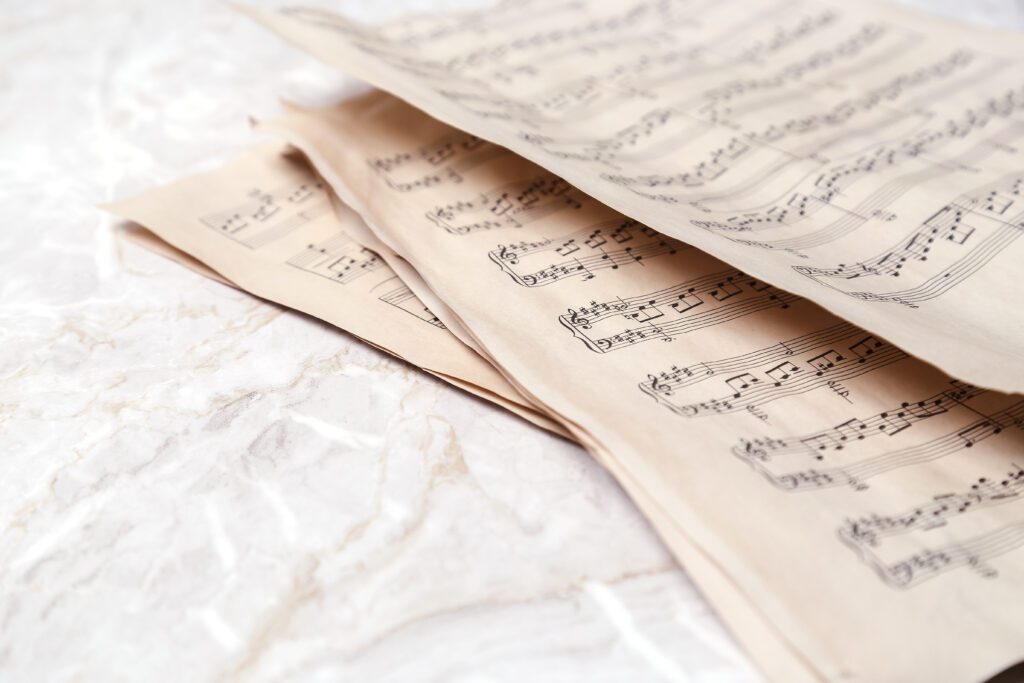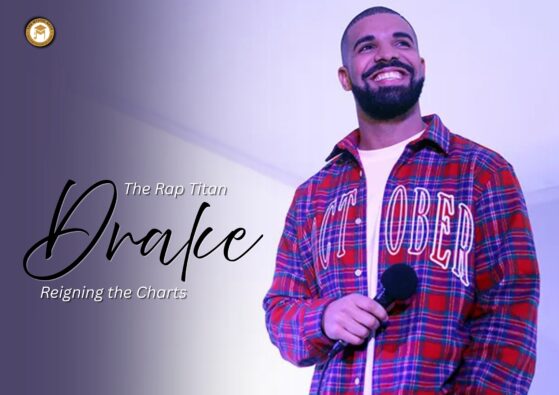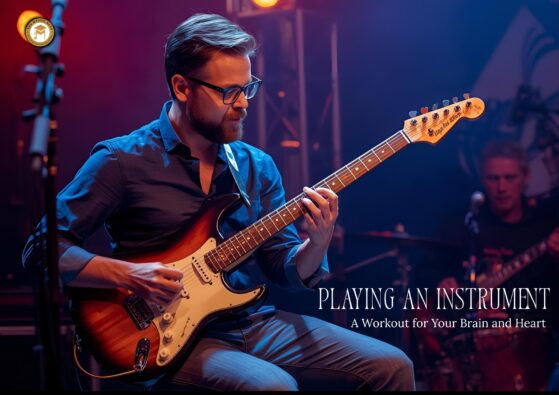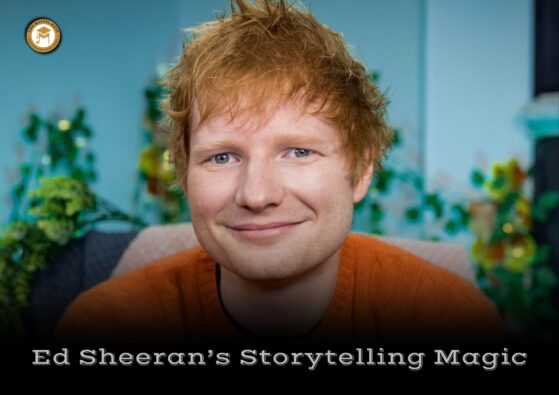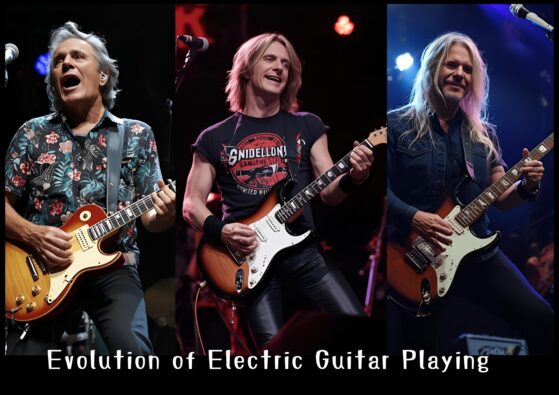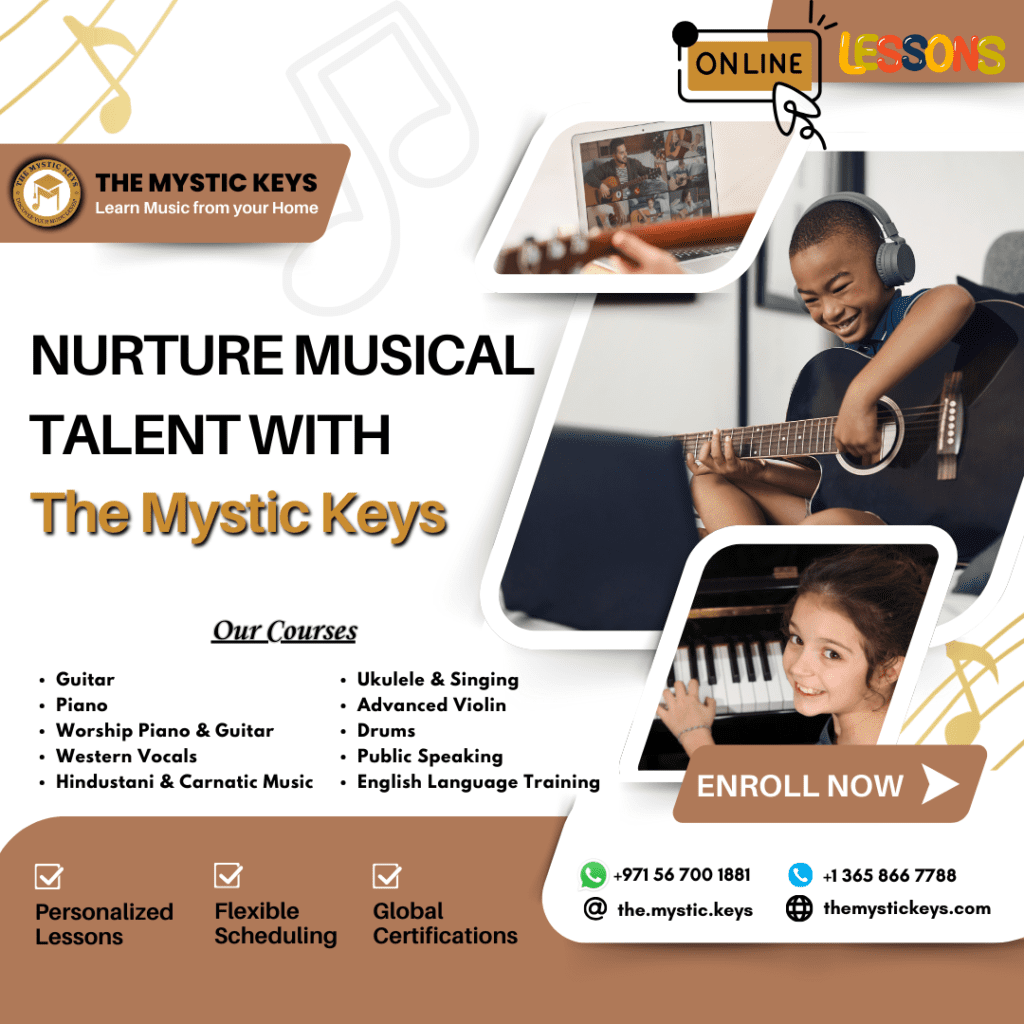How to Read Sheet Music: A Beginner's Guide
Reading sheet music may seem like cracking a secret code. At first glance, the dots, lines, symbols, and notes can feel overwhelming. But once you understand How to Read Sheet Music, it becomes a powerful tool to express music, communicate with other musicians, and master your favorite songs.
At The Mystic Keys, we’ve helped hundreds of beginners learn how to read music confidently. In this guide, we’ll break down sheet music into simple parts, using relatable examples and a step-by-step approach that will help you become fluent in music notation.
What is Sheet Music?
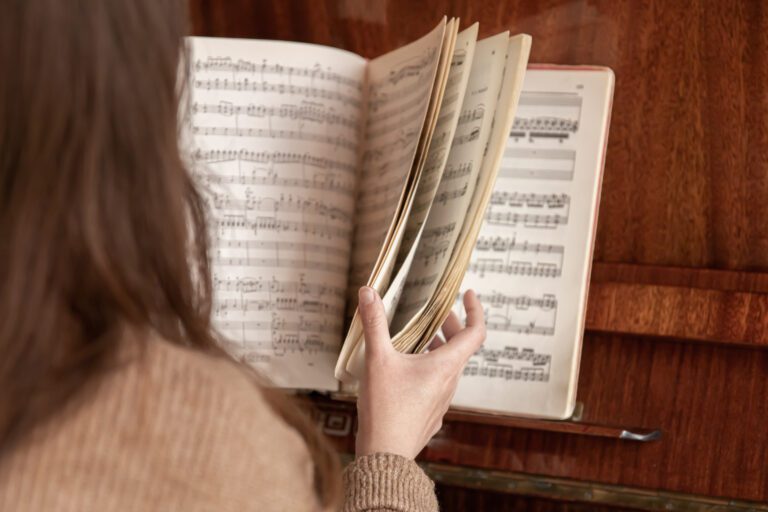
Sheet music is a written language of music. It tells you:
What notes to play
When to play them
How long to hold each note
The rhythm, dynamics, and feel of the song
It’s used by musicians around the world, from beginners to professionals, in all genres of music—classical, pop, jazz, worship, and more.
1. The Staff and Clefs
The foundation of sheet music is the staff—five horizontal lines on which notes are placed. The position of the note on these lines tells you How to Read Sheet Music.
There are two common clefs:
- Treble Clef (G Clef): Used for higher instruments like piano (right hand), violin, flute, and vocals.
- Bass Clef (F Clef): Used for lower instruments like piano (left hand), cello, and bass guitar.
Each clef helps you identify the names of notes on the staff.
2. Notes and Pitches
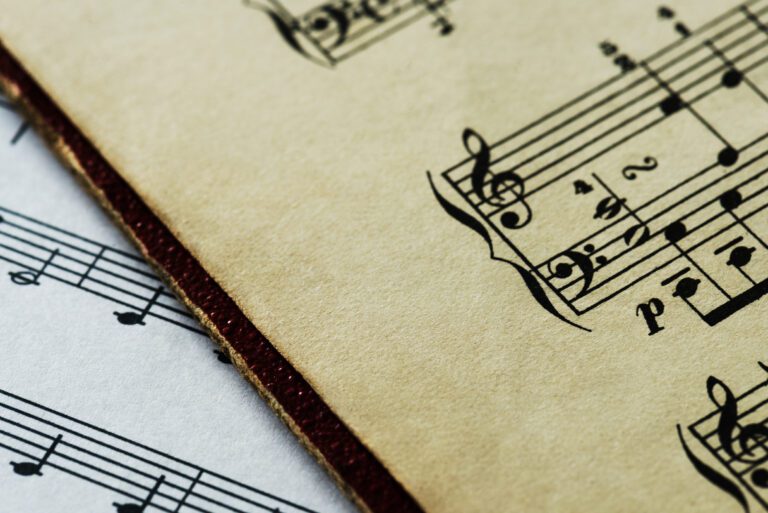
The musical alphabet has seven letters: A, B, C, D, E, F, G. After G, it repeats.
Each line and space on the staff represents a different note. In the Treble Clef:
Lines (from bottom to top): E-G-B-D-F
Spaces: F-A-C-E
In the Bass Clef:
Lines: G-B-D-F-A
Spaces: A-C-E-G
3. Note Durations and Rhythms
Each note also has a time value:
Whole Note: 4 beats
Half Note: 2 beats
Quarter Note: 1 beat
Eighth Note: 1/2 beat
Sixteenth Note: 1/4 beat
Rests are the silent counterparts of notes. Each type of rest matches the duration of a note.
Learning rhythm is crucial—you’ll need to clap, tap, or count beats to stay in time.
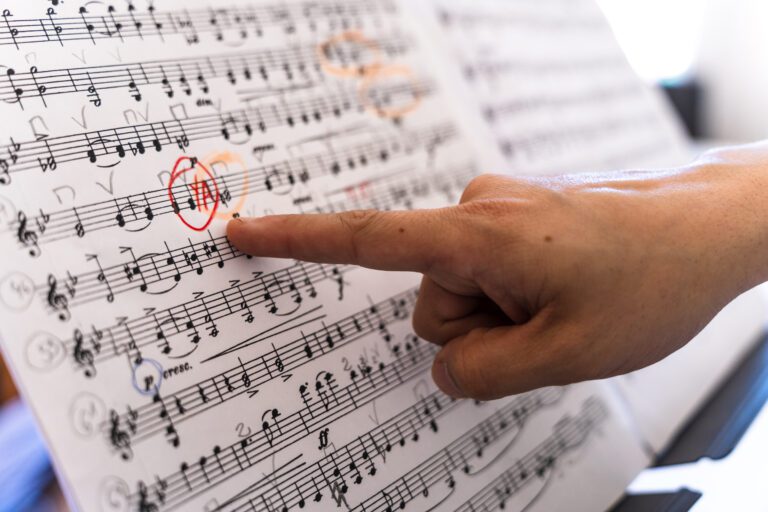
At the beginning of a piece, you’ll see a time signature—two numbers stacked vertically (like 4/4 or 3/4).
The top number shows how many beats are in each measure.
The bottom number shows the note that gets one beat.
4/4 (common time) is most common—four quarter-note beats per measure.
Next comes the key signature—sharps (#) or flats (b) placed right after the clef. It tells you the key of the piece (the tonal center).
For example:
No sharps or flats: Key of C major
One sharp (F#): Key of G major
Memorizing major key signatures helps you predict which notes will be sharp or flat.
6. Measures and Bar Lines
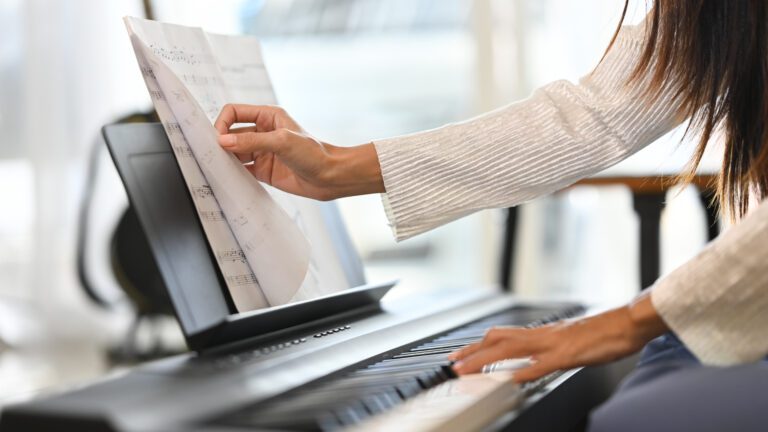
Sheet music is divided into measures by vertical bar lines. Each measure contains a set number of beats (based on the time signature).
Bar lines help musicians stay in sync, especially in ensemble or band settings.
7. Dynamics and Expression
Music isn’t just about the right notes—it’s also about How to Read Sheet Music. That’s where dynamics and expressive marks come in:
p (piano) = soft
f (forte) = loud
mf (mezzo forte) = medium loud
crescendo ( < ) = gradually louder
diminuendo ( > ) = gradually softer
Other expressive marks include:
Staccato (short and detached)
Legato (smooth and connected)
Accents (emphasized notes)
8. Ties, Slurs, and Dots
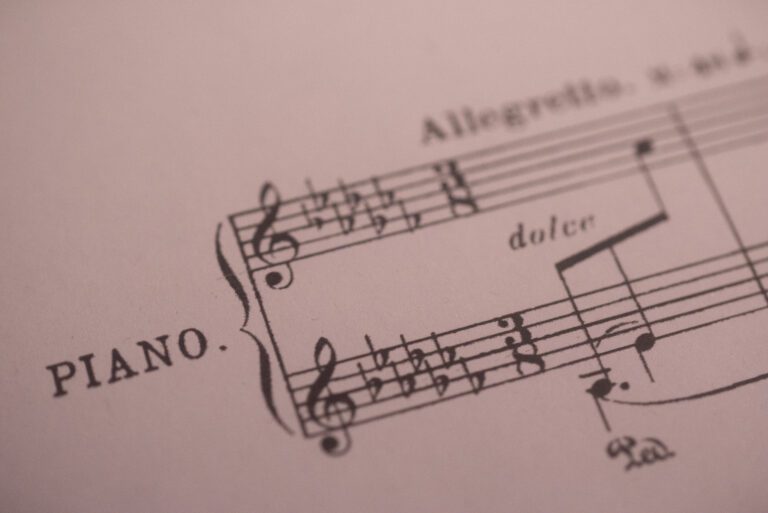
Tie: Connects two of the same notes to extend their value.
Slur: Connects different notes smoothly.
Dot (after a note): Adds half of the note’s value.
These symbols help create flow and phrasing in your music.
9. Ledger Lines and Octaves
Notes that go above or below the staff use ledger lines—small lines that extend the range.
Octave notation tells you how far apart notes are (e.g., Middle C vs. High C). Instruments have different ranges, and this helps in accurate playing.
10. Practice Tips for Reading Sheet Music
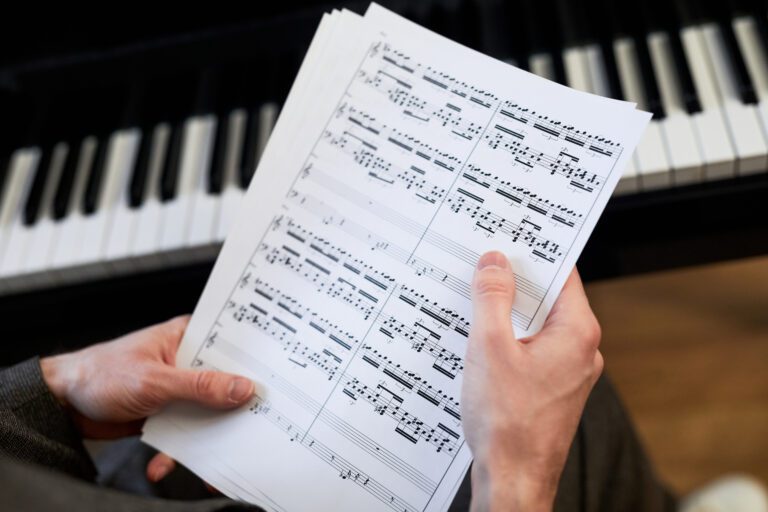
1. Start with simple pieces: Use beginner books or online resources.
2. Practice sight-reading daily: Read new music slowly without stopping.
3. Clap rhythms: Before playing, clap the rhythm aloud.
4. Use flashcards: Memorize note names and values.
5. Play with backing tracks: Helps with timing and flow.
6. Sing the notes: Vocalizing helps internalize pitch.
7. Use music apps: Tools like Flowkey, Simply Piano, and Staff Wars make learning fun.
The Mystic Keys Advantage
At The Mystic Keys, our online music lessons are designed to help students not just play music but understand it. We offer:
One-on-one Zoom sessions
Customized lesson plans
Recorded sessions for revision
Sheet music reading training from the basics to advanced
Professional teachers certified by Trinity College London
Whether you’re a beginner or transitioning from ear-based learning to notation, we can help make sheet music your strength.
Conclusion: Reading Music is a Superpower
Learning to read sheet music unlocks a world of musical possibilities. It empowers you to play from scores, join ensembles, explore new genres, and eventually compose your own music.
Like any language, fluency comes with practice. Be patient, consistent, and curious—and you’ll soon read music as easily as reading a book.
So grab your favorite instrument, open a music sheet, and let your musical journey begin.
Explore Piano Lessons online designed to help you improve your musical timing with techniques like metronome practice, tapping, and rhythm drills for better accuracy.
For more information and exciting resources about learning music, visit our website at The Mystic Keys. For more music content and exciting offers follow us on
Facebook, Instagram, YouTube, LinkedIn, Twitter, Pinterest, Reddit, Threads,
and Quora.
Related Blogs
How can I learn public speaking? A Guide to Confidence
Public speaking is a powerful skill that can open doors to countless opportunities, both personally and professionally. Whether you’re presenting in front of a small group or addressing a large audience, the ability to speak confidently and persuasively can have a lasting impact
Master Storytelling for Public Speaking | A Comprehensive Guide
Public speaking is an age-old skill that has shaped societies, moved hearts, and inspired action across centuries. Although facts, statistics, and data often form the backbone of many speeches, it is storytelling that truly touches the audience’s heart.
The Importance of Public Speaking | Elevating Communication Skills for Success
The importance of public speaking skills cannot be overstated, as they play a critical role in personal and professional development. Public speaking empowers individuals to articulate their thoughts clearly, influence others, and build their confidence.


